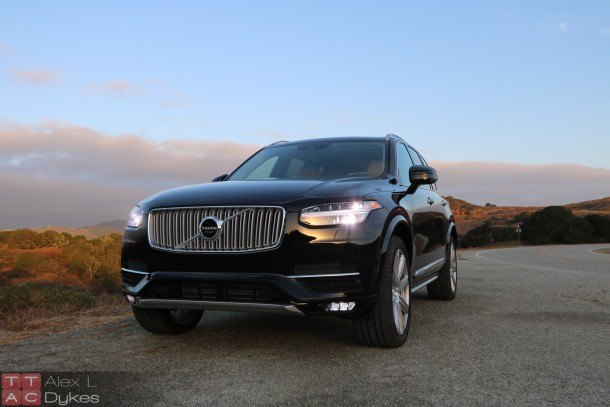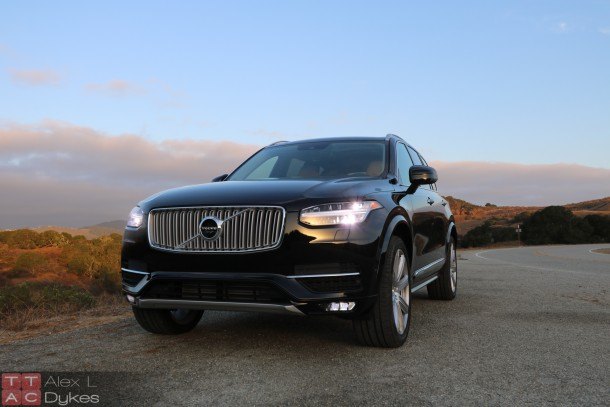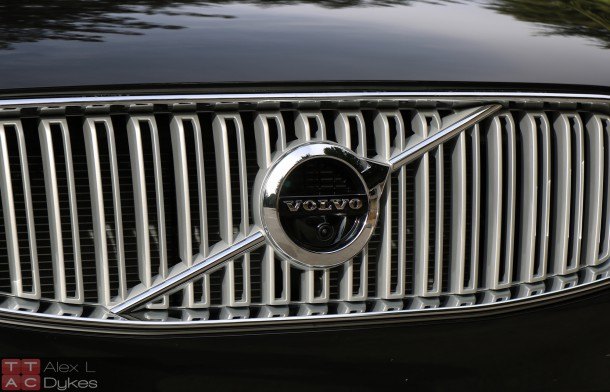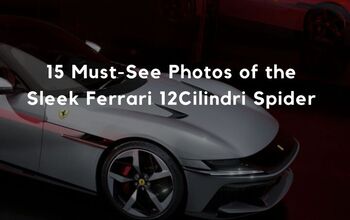2016 Volvo XC90 T6 AWD Review - Sweden's New King (Video)

2016 Volvo XC90 T6 AWD
Many of you have asked why we bother to review a car we’ve already reviewed based on a few hours at a launch event. The all-new 2016 Volvo XC90 is a textbook example of why more time with a car allows for a more complete review.
At launch events, you have no time to perform acceleration or brake tests of a vehicle (and, of course, you aren’t testing the car on the same circuit that the rest of the cars have been tested upon) and you have no ability to drive the competition back-to-back to get a sense of comparison. There is a reason that first drive reviews tend to be fact based: it’s hard to review a car in a vacuum.
So why is the XC90 a textbook example? Because of my own biases. Biases are interesting things. They can blind you to a car’s faults, or they can lead you to overcompensate and find fault.
After digesting my time with the XC90, I started falling into the latter camp. Edmunds 0-60 tested the XC90 and found it slower than expected. I started wondering if I had been wearing rose-colored glasses and asked myself: “Was it really that good?” Therefore, I had to get my hand on one again so I could run it through our battery of tests and drive it on my own for a week to find the answer.
The answer: It is better.
While the XC90 remains a front-wheel drive based vehicle, the front end has an almost rear-wheel drive proportion to it. The front door and firewall are pushed further from the wheelwell to accommodate Volvo’s latest drivetrains and the hood is surprisingly long with proportions more similar to the X5 than the MDX. This move was made possible by Volvo’s new DriveE drivetrains which are more compact, but require a little more room aft of the front axle.
Now at this point you may be asking yourself, what’s going on in that big engine bay when the rumor mill tells you the XC90 was designed to hold a maximum engine size of two liters? Nothing. Nearly a foot behind the front grille sits the crossover’s radiators and the engine itself sits nearly the same distance from the last radiator. Why? Safety.
Volvo’s design allows the XC90 to meet all the world’s latest pedestrian impact regulations without fancy (and expensive) explosive bolts or airbags. The extra space up front and between the hood and the engine are designed to cushion the impact of the dancing sign holder you didn’t see as you were turning into the mall. There’s also a side benefit: reduced cost in minor fender benders since it takes a more severe impact to reach the XC’s radiators.
Interior
Base models get the usual fare of soft-touch, injection-molded plastics and real aluminum trim, but come standard with real cowhide, something increasingly rare in base luxury cars. Fit and finish in all models is at the top of the segment surpassing the Acura and Infiniti, and it’s easily and on par with the Mercedes GL and Range Rover Sport despite costing less.
Volvo is packing the XC90 with a ton of standard equipment as well, including an 8-inch LCD instrument cluster, 9.3-inch infotainment screen, four-zone climate control and heated front seats. The value becomes more obvious when you step up to the $56,300 Inscription trim that we sampled because it’s basically the same price as a base BMW X5 xDrive35i. For that price Volvo tosses in a hand stitched leather coating the dash and doors, open pore trim, ventilated front seats that contort in more ways, rear window shades, nappa leather trim and a 12.3-inch LCD gauge cluster.
Volvo’s legendary seats have also been thoroughly redesigned. The new seats incorporate four-way lumbar support, adjustable side bolsters and a power extending thigh cushion. Fair warning, the controls for those new features aren’t as intuitive as I had hoped. You have to use a toggle to switch between modes (indicated on the LCD in the dash) and then the 4-way toggle will do your bidding. Volvo claims that the new front seat design isn’t just more adjustable, it’s also safer by sporting a deformable bottom to reduce spinal injuries should your Swedish tank fly off the road.
The middle row has practicality in mind with each seat being a separate unit and not the more common 60/40 split. You can fold, recline, or slide forward/backward each of the three seats without moving the others. This makes it easier to keep a child seat strapped in one seat and access the third row or jam long IKEA items in the cabin. Volvo continues to offer an integrated child bolster in the middle seat, but the standard 4-zone climate controls may not hold up to Timmy’s tap-dancing impression. The third row is more comfortable than the X5 or MDX, but it’s still more compact than the QX60’s way-back. Behind the third row you’ll find enough room for four carry-on sized roller bags making it a hair more practical than the Infiniti or Acura.
Infotainment
The 9.3-inch Tesla-esque display looks like someone grafted an Android tablet into the dash. Although less snazzy than the enormous Tesla display, I actually found it easier to use. On the flip side, the display’s surface isn’t glass as I had initially guessed. The surface is scratch resistant, but upon close inspection did show some signs of scuffing, no doubt from a former journalist and aggressive polishing.
The software package offers full iPod/USB integration complete with media library voice commands and standard XM satellite radio. Volvo has pledged to support Apple CarPlay, but our model did not yet have the right firmware to enable that feature. Shoppers should see that firmware shortly and you won’t have to visit the dealer for it, the new Sensus system uses over-the-air updates much like Tesla’s Model S and Model X.
Bundled with the system is a standard 10-speaker surround sound audio system which can be bumped up to a 1,440-watt 19-speaker Bowers & Wilkins system in any trim level for a “reasonable” $2,500.
The optional 12.3 inch instrument cluster reminds me of the Mercedes and Jaguar/Land Rover displays in that the system offers limited customization. While you can select from a few themes, the layout of the display is constant. Between the gauges you can opt for either a moving map display or infotainment status. Audi wins the LCD gauge contest however with their upcoming Q7 which displays Google satellite view imagery on the entire 12-inch display with gauges floating over the map.
Safety
Although the XC90 is loaded with all the latest safety tech, it is (by design) not as interactive as the Japanese systems. Volvo’s philosophy is to warn, let the driver act, and only as a last resort intervene. Volvo’s collision warning system warns you when you’re driving like an ass and will tap the brakes and yank on the seatbelts to get your attention, but the MDX crams on the brakes in similar situations mid-maneuver. The result in the Acura is that you look like a bigger ass having “brake checked” the car you just cut off.
Likewise, the Volvo will remind you that your passengers are unbelted, but it won’t keep “dinging” at you until you comply, just a few dings and you’re on your own. Want to enter a navigation address while in motion? Enter at your own risk. Even Volvo’s autonomous braking system (City Safety) won’t step in until thing have gone completely pear-shaped. This means that Volvo’s systems may be less likely than Acura’s to prevent an accident, especially at higher speeds, but you will suffer far fewer false alarms and folks with control issues are likely to be happier with the Volvo.
This year brings a few new safety gadgets like a system that pulls you back in the seats if the car detects you leaving the road, and autonomous braking if the car detects you’ve turned left in front of oncoming traffic. There’s also a rear-end radar system that tightens the belts and increases brake pressure if the car thinks a drunk is going to plow into your behind.
In other markets, the car will also flash its lights to warn the approaching lunatic, but that apparently violates some silly U.S. law, so we don’t get it. For passive safety, Volvo claims the lack of rear thorax airbags in the second row is due to the XC90’s side impact scores being so good that they aren’t needed. Seeing as the ancient first-generation XC90 managed to still get top crash test marks on tests that didn’t even exist when it was designed, I’m inclined to believe Volvo.
Drivetrain
The only transmission is an 8-speed Aisin automatic, essentially the same transmission found in the 2016 Lexus RX 350 and 2016 BMW X1. While we expect to see a front-wheel drive model at some point, for now all T6 models get a standard Haldex AWD system. This generation of the Haldex AWD system is more aggressive at locking the center coupling sending 50 percent of the power to the rear more frequently than previous systems. The result is a crossover that lacks most of the front-wheel drive dynamics you find in the base versions of the MDX and QX60.
Drive
Thanks to the new chassis design, just 52 percent of the weight is carried on the front axle making the weight balance essentially the same as the Mercedes GL and GLE. That means the neutral handling characteristics are closer to the 50/50 balanced BMW than the 60/40 balanced Acura or Infiniti.
The Volvo sports a new double-wishbone suspension design up front that improves handling and allows a four-corner air suspension to be optionally fitted. Out back we get a rear suspension design that is related to what we see in the new 3-Series fighting Jaguar XE. (This is because JLR and Volvo were both part of Ford’s luxury wing and there was common development until the break up.) Topping off the hardware list are optional 275 width tires which are the widest ever used by Volvo on a production car.
The combination of the new suspension design, wide tires and a surprisingly well-balanced chassis makes the XC90 drive “smaller” than it looks. Actual road holding is 9/10ths of the X5 which is notably higher than the MDX or QX60. That’s thanks as much to the weight distribution and standard AWD as it is to the tires. Oddly Volvo doesn’t seem to have an option for ultra-grippy summer tires like we see on some of the competitors, which is a pity. Push the XC90 hard and it isn’t the suspension that starts to sweat, it’s the all-season rubber.
There is a downside to the optional 275/35R22 tires however: the ride. Even with the optional air suspension, the XC90 can feel a little too firm on rough roads or driving off the beaten path. If you don’t get the $1,800 optional air suspension the XC90’s ride feels a little less polished, but a hair sportier. Personally, I think the available 275/45R20s are a decent balance between ride and handling. The air suspension can be added to any trim level and allows the driver to adjust the ride height and adaptive behavior.
Part of the reason I wanted to test the XC90 on my own turf was to see how fast it scoots to 60. At the launch event I thought Volvo’s estimate of 6.1 seconds sounded a hair optimistic, but the “butt dyno” is hardly a calibrated instrument and the 6.2 second time I clocked at the event was in a pre-production model and on an uneven surface.
Then I heard Edmunds tester couldn’t muster better than a lazy 7.4 seconds. What’s the deal? I’m not sure. According to Edmunds, just leaving the Volvo in “Drive” resulted in a long 7.9 seconds. However, doing the same thing in our tester yielded a repeatable 6.4 seconds. Even allowing the start/stop system to stop the engine didn’t elevate the times beyond 7 seconds.
I’m not in the business of assuming, but it sounds like something was wrong with Edmund’s XC90. After many phone calls I found a dealer willing to let me test an XC90 and it rang in between 6.3 and 6.5 seconds in back-to-back runs. With that number put to bed, comparisons are more important to me. The X5 xDrive35i in my tests was actually 1/10th slower than the Volvo. The MDX is right around the same speed thanks to a new 9-speed transmission and the CVT equipped QX60 is a snail.
If you didn’t know the XC90 had a four-cylinder engine under the hood, you’d likely just think the engine was a little rough. There are no vibrations in the cabin to give the engine away, but the exhaust note is a far cry from a well-tuned inline 6.
The four-cylinder only felt out of breath at higher speeds, but a quick look at the 1/4 mile times of the XC90 and BMW X5 prove the feeling is not fixed in reality. The 6-cylinder BMW’s 1/4 mile run looked eerily identical to the Volvo clocking just 1 mph faster. Looking deeper, the Volvo has a healthy mid-RPM power band since the 0-30 time was 2/10ths slower than the 3-liter BMW SUV, but the 0-60 time was just over 1/10th faster in the Volvo. By the time the 1/4 mile came around, the Volvo was just 5/100ths behind, obviously this is all within the margin of error.
So dynamically the XC90 is a solid European contender, it has the acceleration of an X5 and an interior that beats Land Rover at their own game. What’s the catch? There are two actually. The first is fuel economy. While good for this segment, is not as good as you’d think with a small four-cylinder engine under the hood. We averaged 20.1 mpg during a week of mixed driving which is a hair lower than I got in the X5 xDrive35i, but essentially the same as the MDX’s last average. Since the 4-cylinder engine doesn’t seem to be much more efficient than the competition in a large crossover like this, personally I’d rather Volvo just jammed a smoother 5-cylinder under the hood. That said, the XC90 does have a clear fuel economy “win” over the competition when it comes to the city mileage; in very heavy stop-and-go traffic the Volvo beat the BMW or Acura. On the highway, the competition is more efficient.
The second problem will be getting shoppers into the Volvo dealer since the brand doesn’t have the seemingly endless advertising resources of Audi.
Pricing, you ask? I think that’s actually a distinct advantage for Volvo. Spanning from $49,895 to $68,155, the XC90 actually has a very small price range but the features build rapidly. With a high level of standard gadgetry, the Volvo averages $10,000 less than a comparably equipped BMW and nearly $20,000 less than a Mercedes GL.
The Volvo will set you back around $5,000 more than the MDX, but adjusting for the standard features we get in the XC90 it ends up being between $40 and $2,000 more depending on how you option each up. That’s quite a small price jump when you consider the Volvo delivers a more refined ride, better handling, a much more handsome interior and in general more luxury “polish” than we see in the MDX.
The way the safety systems interact with the driver, the fit and finish, the materials quality and integration of the infotainment system, draw a distinct contrast between the Acura and the Volvo. While I’m still not entirely sold on an all-four-cylinder future, I have to admit that the XC90 seriously impresses where it counts.
Since the word “value” ignites a fire in my loins and I’m a sucker for excellent interior design, the XC90 earns a place on the eclectic list of cars that I would actually buy myself. These include the Kia Soul, Audi A3 Cabrio, Honda Accord Hybrid, Hyundai Genesis and Kia K900. (I warned you, it’s an eclectic list.) Whether the Geely/Volvo experiment is destined for success or failure I don’t know. But I do know that Geely’s cash and Volvo’s flair for a design are a tasty combo.
Volvo provided the vehicle, insurance and one tank of gas for this review
Specifications as tested
0-30: 2.65 Seconds
0-60: 6.43 Seconds
1/4 Mile: 14.75 Seconds @ 94 MPH

More by Alex L. Dykes
Latest Car Reviews
Read moreLatest Product Reviews
Read moreRecent Comments
- Lou_BC Well, I'd be impressed if this was in a ZR2. LOL
- Lou_BC This is my shocked face 😲 Hope formatting doesn't fook this up LOL
- Lou_BC Junior? Would that be a Beta Romeo?
- Lou_BC Gotta fix that formatting problem. What a pile of bullsh!t. Are longer posts costing TTAC money? FOOK
- Lou_BC 1.Honda: 6,334,825 vehicles potentially affected2.Ford: 6,152,6143.Kia America: 3,110,4474.Chrysler: 2,732,3985.General Motors: 2,021,0336.Nissan North America: 1,804,4437.Mercedes-Benz USA: 478,1738.Volkswagen Group of America: 453,7639.BMW of North America: 340,24910.Daimler Trucks North America: 261,959




































































































Comments
Join the conversation
This was on the shortlist of possible replacements for our 2008 MDX before an inattentive driver (in the other vehicle) ended that vehicle's life with a BANG. This was early January, meaning that the new XC90 wasn't yet available. We ended up with an Audi Q5 TDi, which has been a great car - sort of a sleeper "muscle-ute" that hits 60 mph in less than 6 seconds yet has averaged 31 mpg overall. XC90s looks great, inside and out, but I guess I'd have to drive one to know whether I could live with the power and the way it's delivered. Then there's the whole issue of this being a brand-new vehicle and the unknown reliability that goes along with that...
Alex, another great review! Handsome car (for a SUV), I could just about wish for a smooth NA inline 6 though. When are you going to get a new miata???!?!?!?!?!?